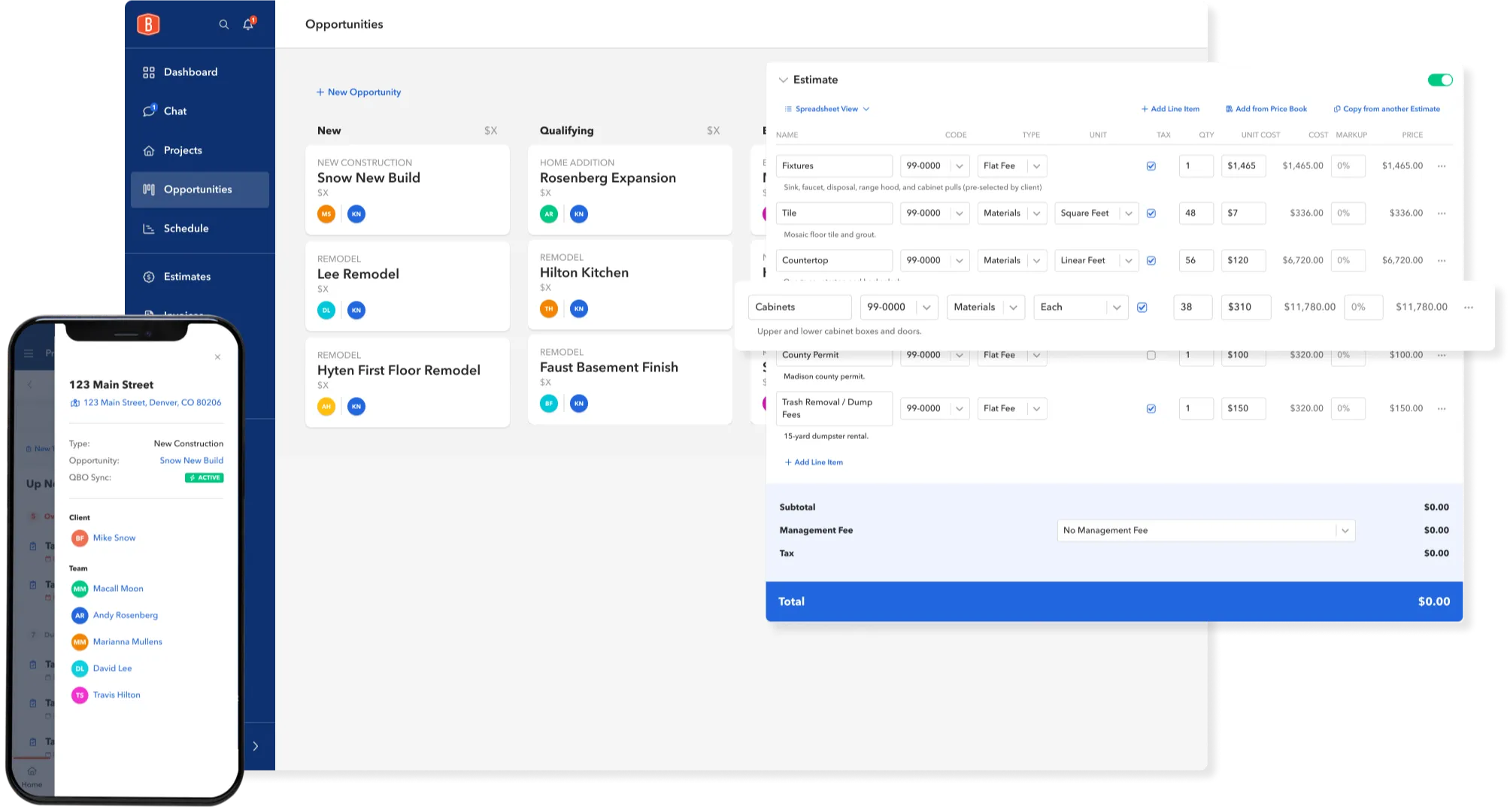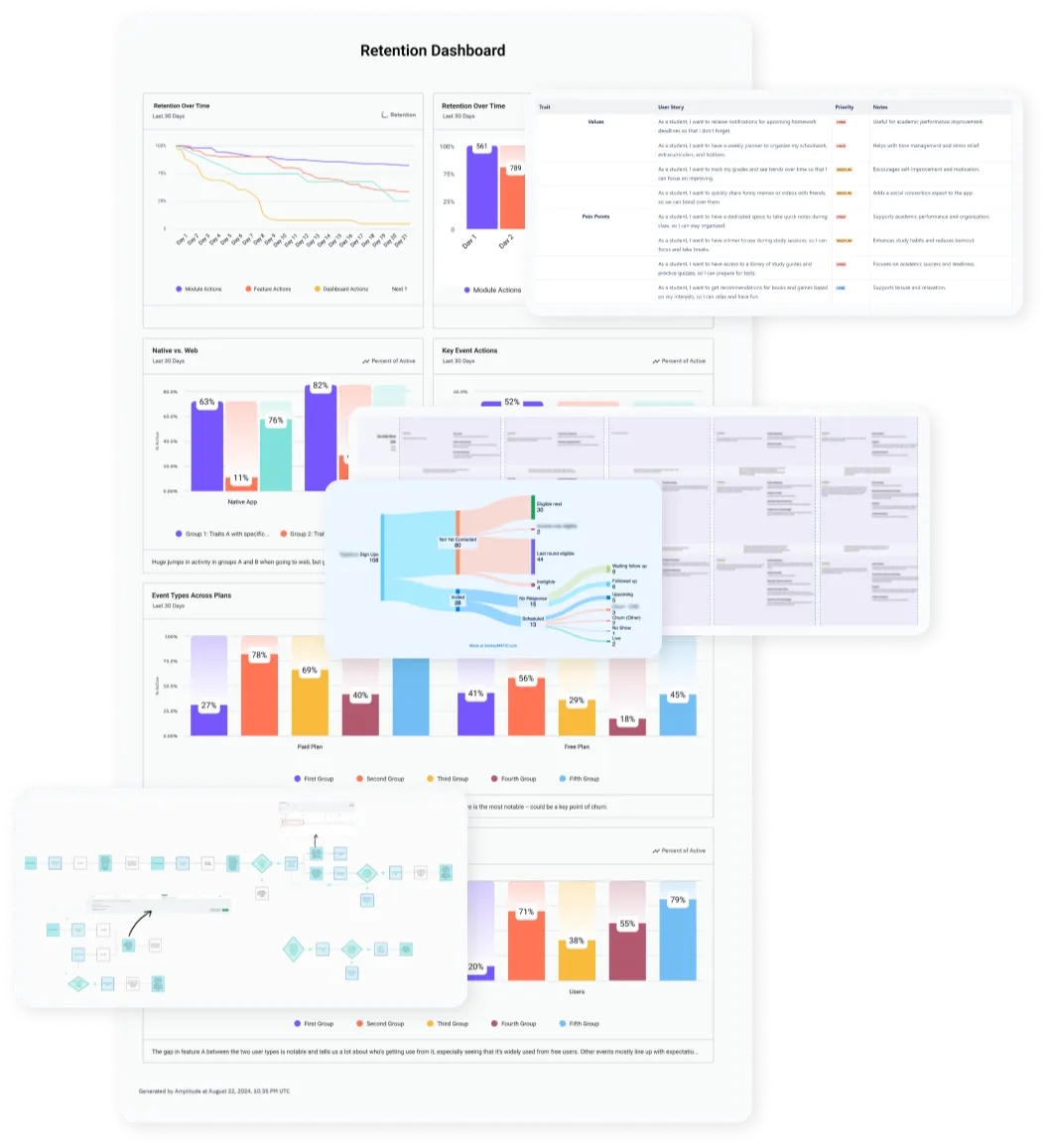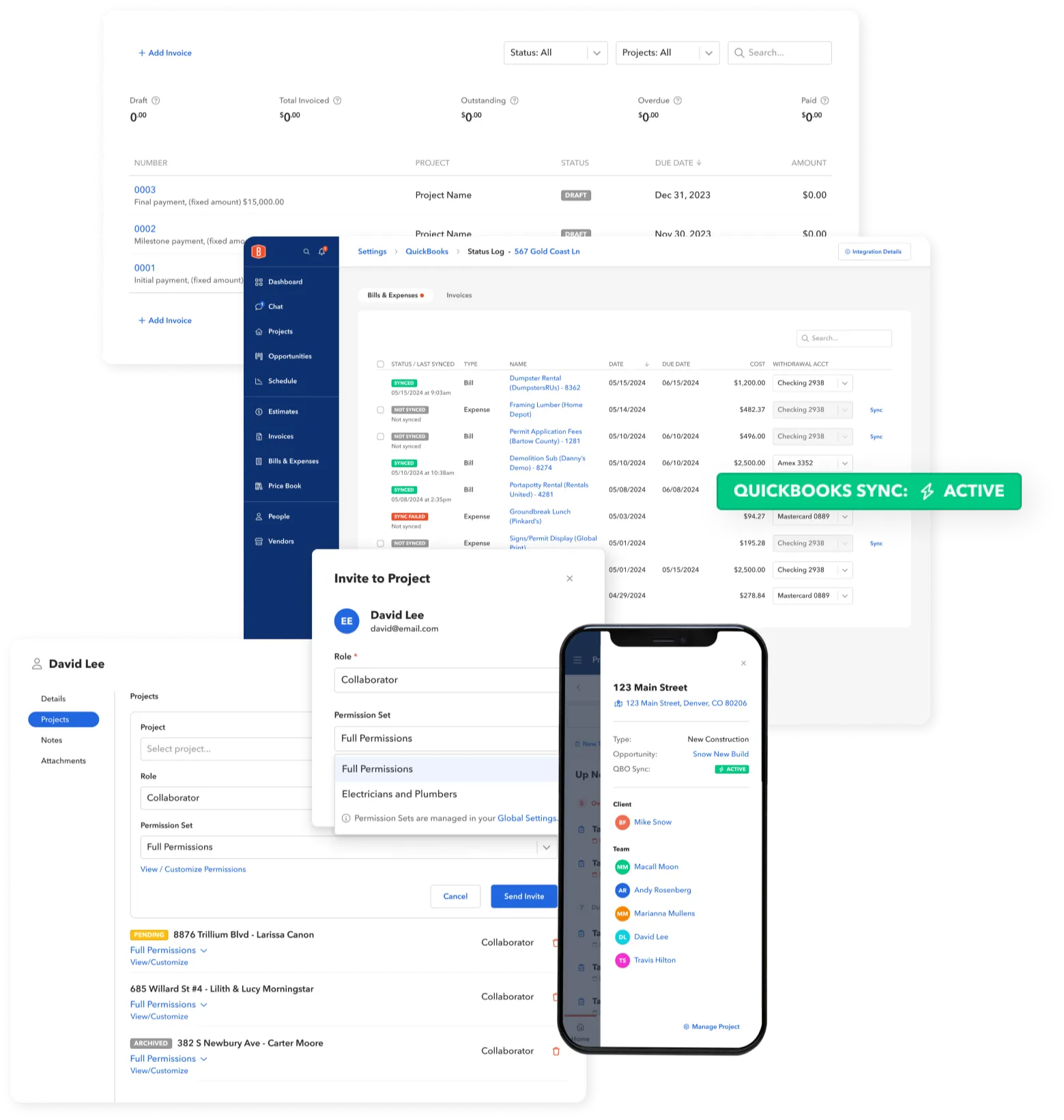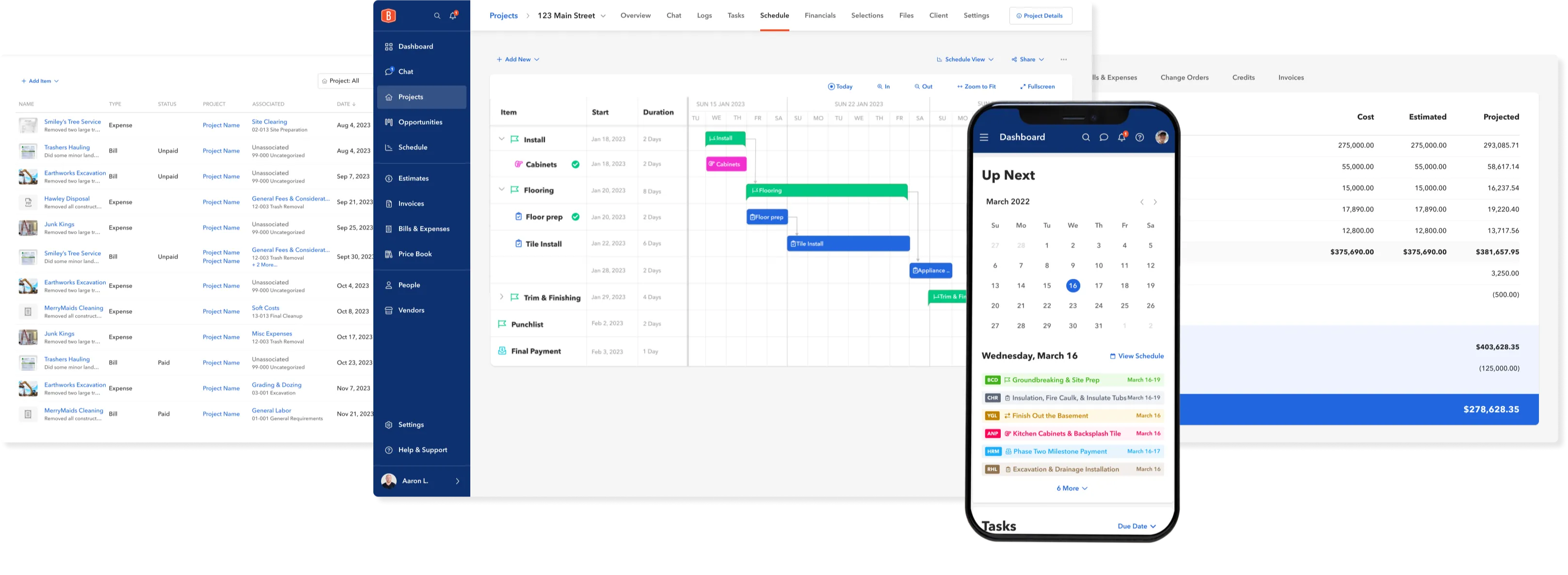
BuildBook
I led the organization's highest velocity product squad, creating FinTech products, API integrations, and experiential improvements that drove user growth, acquisition, and retention.

Project highlights
Launched a QuickBooks Online integration which completely removed “QuickBooks” from our churn list.
Revamped system-wide permissions, leading to a 10% increase in invites to our least engaged segment.
Reduced first time user's time to value by ~24 hours by improving our onboarding and FinTech experiences.

Discover the Product
I used an incredibly wide mix of qualitative and quantitative discovery tools at BuildBook. I kept a close pulse on our user event analytics, on our session replays, on feedback from our frontline workers, and on the customers themselves through interviews and support interactions. To guide my continuous discovery, my squad defined and followed a north star for each project supported by easily quantifiable KPIs. This meant that I was able to both measure my past launches and discover emerging user behaviors and patterns as a part of my daily life. I led the translation of all this data into insights, then into workflows and models, and finally into outcome-driven roadmaps for my squad.
Tools Used









Build the Solution
Shape
Following a rough adaptation of Basecamp's Shape Up, each of our 6 + 2-week cycles started with shaping. I was frequently handed vague ideas and rough priorities from our leadership and then worked with my product trio to “shape” solutions, focusing on how to deliver the greatest value in the most efficient way.
Bet
As our discovery habits created new ideas, and as our leadership found new priorities, betting became a regular part of our cycle. My squad was empowered to pitch ideas to work on, giving us an immense amount of impact and ownership over our work.
Build
Building in Shape Up feels odd when you come from a scrum background: you're given six weeks to create what you've bet on in a pre-defined “appetite.” How much you get done, how it's implemented, and what the final result looks like is all up to your squad while it's built. This lack of constraints forced us to focus on our north star, creating high-quality, consistent user experiences.
Cool Down
Following every six-week cycle, we went into a two-week cool down period: a sort of extended retrospective. Our engineers were encouraged to take on tech debt, bugs, and all the other tickets that keep them up at night, while my product trio took the work we'd been shaping in the previous six weeks to leadership to bet and start it all over again.
Tools Used







Deliver the Results
I worked with incredibly talented engineers and designers at BuildBook, which meant my role during the product build and delivery was to create bounds, ensure cohesiveness, and mediate conversations. I watched from a distance and intervened when asked or needed. This helped me to focus on a much, much more important job: shielding my squad from everything outside of their delivery. I took on any work that would distract my team from doing what they do best. I worked with product marketing and support to coordinate launch strategies, I set KPIs and guided data instrumentation, I wrote customer-facing documentation, I managed all of the outside questions and suggestions, and I kept a paper trail on everything my squad did (when you move at the rate they did, it's easy to forget the details).
Tools Used








